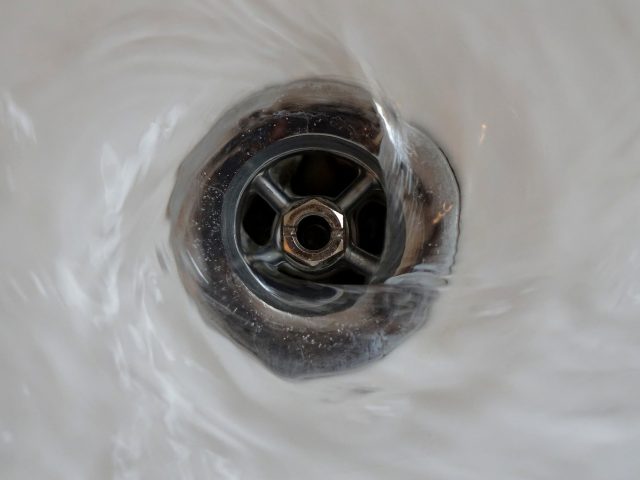DIY-Do-It-Yourself-Self-Installed Shower Drain-Bathroom Drain-Drainage System Installation-Setup-Project: How To-Tips for-Step-By-Step Guide
DIY-Do-It-Yourself-Self-Installed Shower Drain-Bathroom Drain-Drainage System Installation-Setup-Project: How To-Tips for-Step-By-Step Guide
Blog Article
This post following next about Simple Steps for Installing a Shower Base is particularly compelling. Check it out yourself and decide what you think of it.

Upgrading a bathroom is just one of the a lot more preferred residence renovation tasks. Taking care of the plumbing for draining your shower can be exceptionally simple unless you go overboard.
Managing Your Own Shower Drainpipe Installment Task
You can physically build a collector for your new shower, however you truly need to think about it. Do you really want to get into the complications of obtaining the sloping proper, not to mention seeing to it every facet of it is water-proof? And I mean every facet! It is a lot easier to simply get a pre-cast collector online or at your local Lowes, Home Depot or equipment shop. Structure one might seem like an excellent concept, but you will probably really feel differently after a number of hours.
No matter how you go about obtaining a pan, you ought to make every effort to use one that has the drain situated in the very same area as the original pan. Relocating the drain pipelines can be a task, especially if the contractor made use of an unique framework structure. If you are determined to move the drainpipe, you are going to have to reduce the pipe or extend it, which may suggest ripping up large pieces of the floor. Rephrase, you are mosting likely to be looking at a numerous weekend task.
Presuming we have our drainpipe lined up, the real attach is relatively easy. The drain pipe ought to be dealing with vertical up to the collector. It will usually appear like a "U", which indicates it serves as a cleanout to maintain unpleasant smells from coming back up from the drainpipe. To link the drainpipe, you are going to produce a water limited link between a drain cap on the top of the pan and also the drain pipeline. Systems vary, however you are typically mosting likely to do this by placing a combining piece on the top of the drainage pipe. This is then covered with gaskets and also literally screwed right into the drain cap. The drain cap need to serve as a locknut, to wit, it screws straight onto the coupling.
The difficult part of this process is obtaining your drain cap to suit a water tight placement in the pan. This is accomplished by withdrawing the drainpipe cap when you are sure everything fits together. Then, you placed plumbing professionals putty around the underside of the cap and then screw it back on. The putty ought to develop a limited seal in between the cap and the shower pan, which maintains water from dripping under it as well as right into the mounting under the shower.
Clearly, restroom showers been available in a wide array of designs nowadays. If you acquire an enthusiast, they almost always featured plumbing guidelines or the shop can note anything unusual you ought to understand. It seems complicated, however is generally quite simple. Have a good time!
Whether you are a tub or shower individual, the majority of people search for shower just alternatives when purchasing a house. This basic truth indicates more than a few home owners invest a weekend upgrading or setting up showers in their washrooms. Luckily for you, it is a rather straightforward procedure.
A collection agency or frying pan describes the horizontal surface situated at the end of the shower. The collection agency commonly includes a non-slip surface area a little banked towards the center or any place the drain is located. Integrated with three to 4 inch walls around the side, the goal of your shower water drainage plumbing is to get the water to flow to and also down the tubes.
Tips for Installing a Shower Drain Assembly
Renovating a bathroom can be exciting as well as fulfilling if you’re tackling the job DIY-style. After you cross off the bigger decisions such as tile style, paint colors, and fixtures, you’ll need to finalize smaller details – such as the shower drain. In this article, we’re sharing some tips for selecting and installing the right drain assembly for your updated shower.
What is a shower drain assembly?
Shower bases or pans typically only come with a pre-drilled drain hole. Since the pan slopes toward the drain, you should consider the placement – left, center, or right – when designing your shower. You’ll need to purchase and install a shower drain assembly that connects the shower pan to the drain pipe underneath the shower. There are a few types of assemblies, which will be covered below.
Size of a shower drain
When it comes to installing drains, size matters. The recommended pipe size for a shower drain is 2 inches, whereas most tubs use 1.5-inch pipes. Why the difference?
Shower pans are shallower than tubs, so there’s a higher risk for overflow. So, the larger pipe allows for quicker draining. If you are replacing an old tub with a newer stand-up shower, you will need to make additional plumbing adjustments to accommodate the 2-inch pipe.
Types of shower drain assemblies
There are three common types of shower drain assemblies: compression shower drain, solvent-glue shower drain, and tile shower drain. The layout, design, and materials of your shower can determine which type of shower drain assembly will work best.
Compression shower drain
This type of assembly attaches to the drain pipe with compression washers and nuts. The drain fitting is typically installed into the base, and then the base is installed into the bathroom floor. This makes compression-style drains easier to install than other options, particularly if you don’t have easy access from the floor under the shower base. Drains are available in a wide range of materials such as PVC (polyvinyl chloride), ABS (Acrylonitrile Butadiene Styrene), and brass, and can be used for acrylic, fiberglass, and steel shower bases.
Solvent-glued shower drain
Made of either polyvinyl or ABS, this type of shower drain is sealed to the drain pipe with solvent glue and silicone. Since you’ll be working underneath the drain pan, we only recommend using this type of drain if you have access under the shower, such as from a basement or crawlspace. It’s also important that you match the type of plastic of the drain with the drainpipe. If you take these precautions, you can install a solvent-glued drain assembly with acrylic, fiberglass, and steel shower bases.
Tile shower drain –
Drain assemblies for custom tile showers feature a waterproof membrane liner placed between two flanges. The tile is installed on top of the liner, collecting any water that seeps through the porous grout. A metal strainer is installed in line with the tile over the drain.
https://www.epshawaii.com/blog/tips-for-installing-a-shower-drain-assembly/

I recently found that entry about How to Install a Shower Drain in a Basement when looking around the web. Sharing is nice. You never know, you will be doing someone a favor. I thank you for reading our article about How to Install a Shower Drain.
Report this page